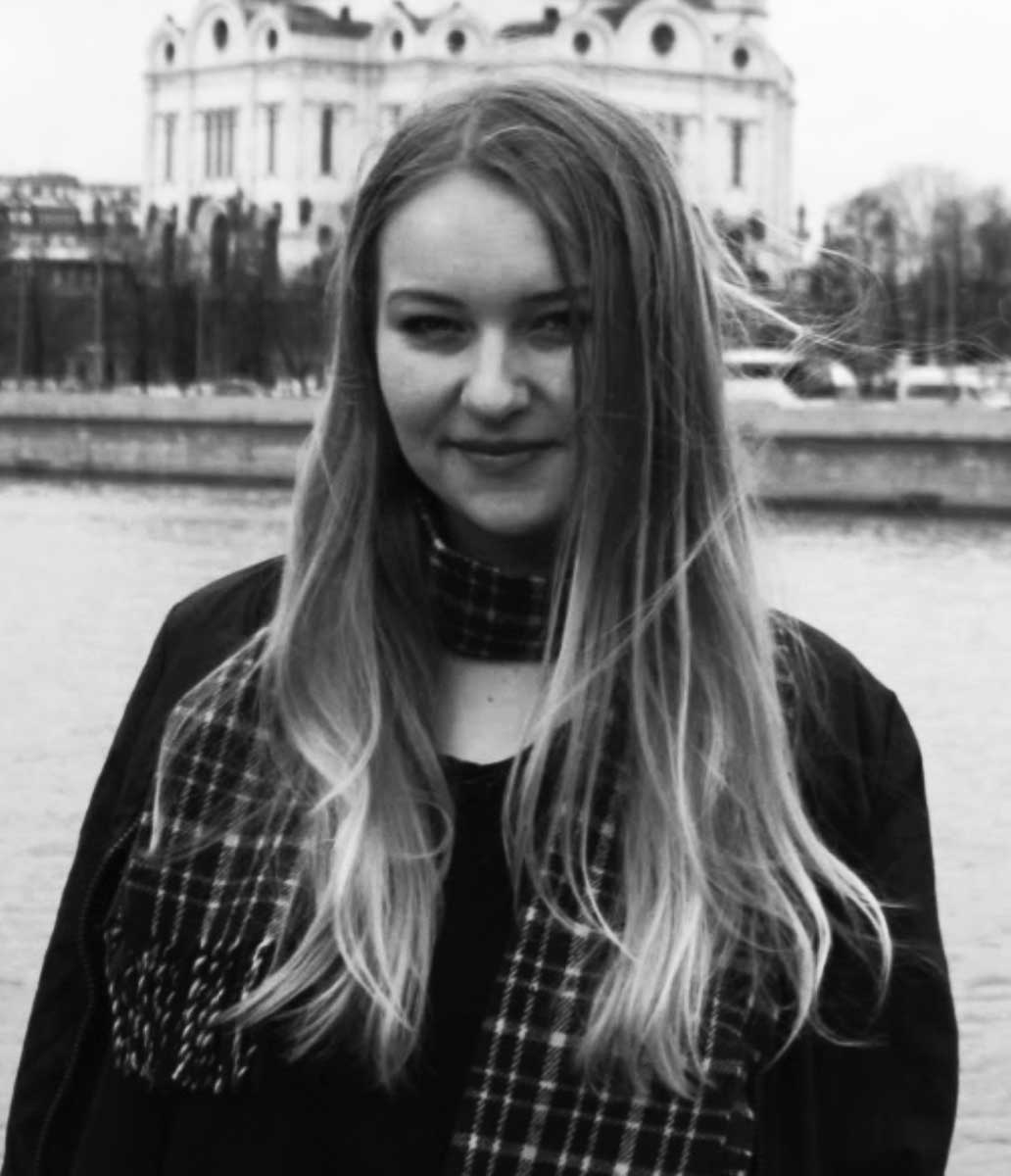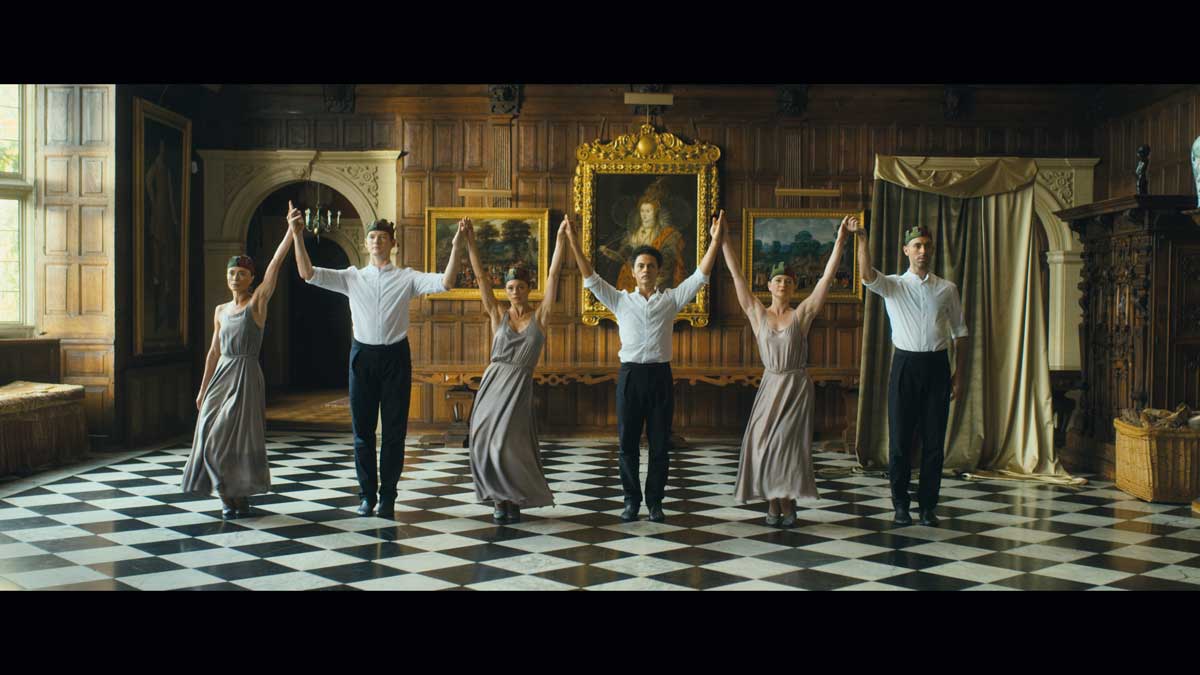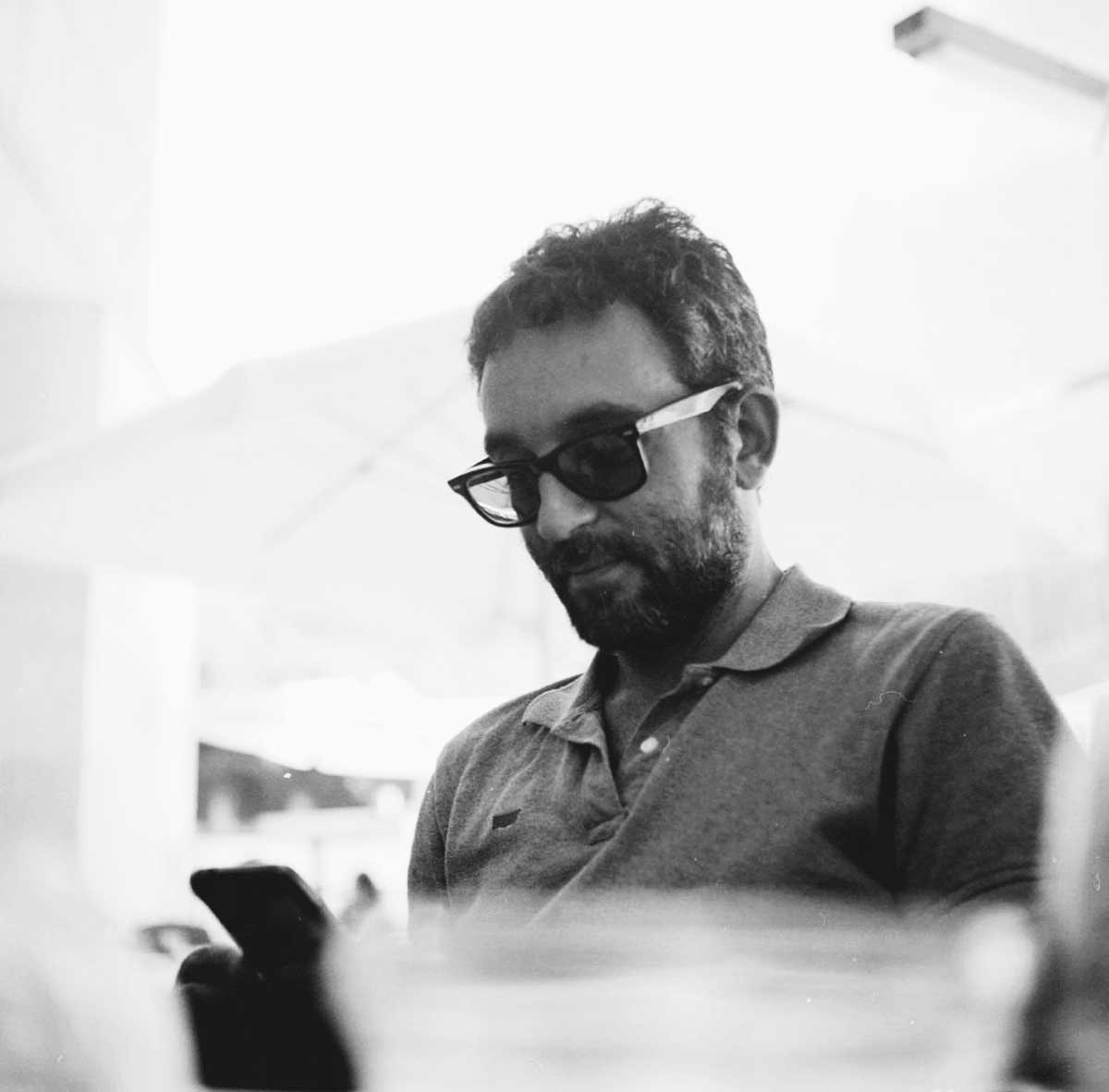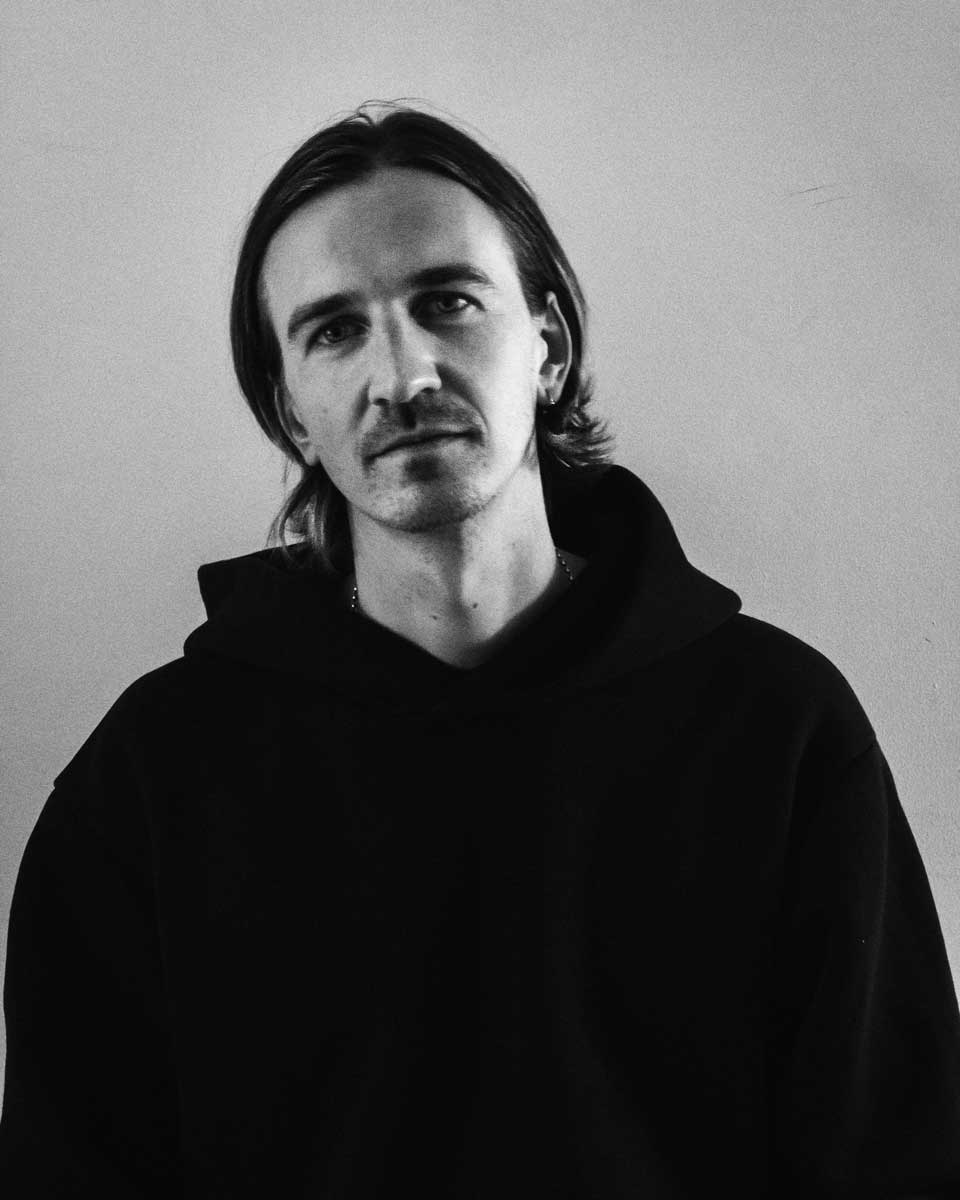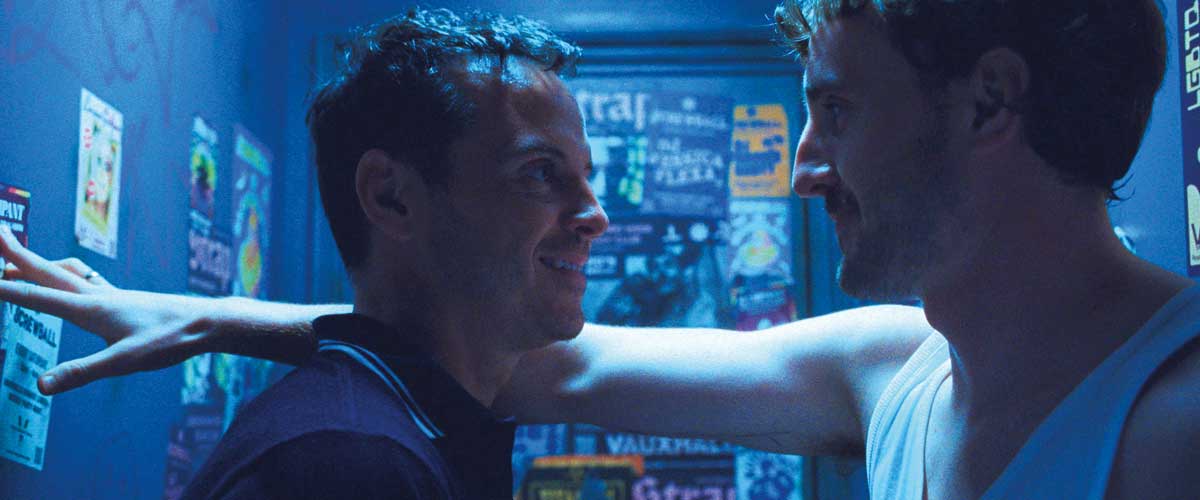
A Life in Colour
Posted on Mar 22, 2024 by Samara Husbands
The craft of the colourist
Nicola Foley gets an inside look at the craft of the colourist, hearing about the tech changing the game, dynamics with DOPs and trends on the horizon
Cem Ozkilicci
Winner of the FilmLight Colour Award at CAMERIMAGE 2023, Cem’s recent projects include Songs of Earth & Possession
Originally inclined towards photography, Cem Ozkilicci forayed into colour grading somewhat by accident, after realising that on-set work wasn’t his calling. His cinematography tutor at the time suggested compositing as a possible career path, which led him to Montreal and a course in Flame. From there, he landed a role at a post house, which – fortuitously – acquired a telecine soon into his tenure. Working under colourist Rob Lingelbach and continuing his education in Flame, his focus gradually shifted towards grading, as he found himself drawn in by its unique intersection between photography and visual effects.
“As well as the artistic side, I was captivated by the technical and social facets of the job,” he recalls. “The collaborative nature of the work, especially synergy with DOPs, directors and clients, was particularly appealing and aligned with my skills and interests.”
For Ozkilicci, whose recent notable projects include Norwegian feature Possession as well as festival favourite Songs of Earth, the process begins with dialogue between the art department, DOP and director. Taking place, ideally, in the earliest stages of production, and including tests on costume and makeup, this collaboration allows for the development of the show LUT, and ‘laying the foundation for the visual world we want to create’. From there, he likes to oversee the dailies during production, facilitating ongoing communication with the production team and VFX, if used. “This continuous exchange is invaluable for strategising on specific scenes or shots,” he explains. “It streamlines the process significantly, making the first day of grading much smoother.”
According to Ozkilicci, the relationship between colourist and DOP is constantly evolving. At the start of his career, over two decades ago, it was customary for DOPs to be physically present in the grading suite, since sharing stills via mobile or high-resolution QuickTime files for review wasn’t feasible. With the strides forward in tech around remote grading solutions, and the shift to digital cameras and workflows, the landscape has changed dramatically.
“DOPs have become increasingly tech-savvy, engaging in discussions about codecs, digital workflows, pipelines and colour management,” he contemplates. “It’s now common for them to have their own set of LUTs, often developed in collaboration with a colourist. This evolution reflects the ongoing importance of effective communication and collaboration. Sharing your ideas, inspirations and references – whether from movies, series, paintings or still photography – remains at the heart of our dynamic and ever-changing field.”
Recently, Ozkilicci established his own colour grading studio, Cocolors, deploying Baselight, which he praises for its robust capabilities. For others working in the field, he emphasises the importance of staying informed about the latest developments, finding that the most valuable insights often come through networking and engaging with other industry professionals.
The integration of machine learning (ML) in colour grading marks a seismic leap forward in technology, he stresses, highlighting FilmLight’s facial tracker as a time-saving marvel used daily. “I foresee ML enhancing efficiency in colour grading, allowing us to concentrate more on the nuances of our craft. In the future, I anticipate it handling basic neutral shot balancing,” he predicts. “However, ML autonomously creating unique, visually captivating looks for high-resolution images with minimal human intervention remains a distant reality for now.”
Whatever software and gadgets are in play, for Ozkilicci, the success of a project hinges on the colourist’s ability to decipher and actualise the visual intent of the creators; translating their vision for the project into reality, and building upon the groundwork established by the art department and the DOP. Challenges can and will arise, he insists, so good communication is always key. “I’ve come to realise the paramount importance of listening in the field of colour grading,” he comments. “While some colourists lean more towards artistic flair, others towards technical prowess and some excel in client interaction, I firmly believe that the ability to listen to clients and understand their needs is a defining skill. This often gives a colourist an edge, allowing them to meet and even exceed expectations.”
In parting advice for aspiring colourists, Ozkilicci advocates exploring creative media of all varieties, and a steadfast commitment to continual learning. “Colour grading is a blend of art, technology and psychology. Beyond technical skill, immerse yourself in many art forms – cinema, music, literature, painting, photography,” he concludes. “This broadens your perspective and fuels creativity. Stay curious and avoid comfort zones; they can stifle creativity. And, if possible, travel. The world offers endless visual and cultural experiences to draw from. Lastly, be patient and kind to yourself and others.”
Ella Soryl
Based at Platform Post, Ella’s worked on top productions including Channel 4’s Kids and BBC’s Horrible Histories
“Growing up, I remember falling in love with cinema, not only because of the storytelling: I was attracted to art created by light,” reminisces Ella Soryl, a colourist with Soho-based post-production house Platform. Fascinated by the effects of colour and light, she spent her teenage years designing light installations for events – and when she discovered the field of colour grading, she knew it was a perfect match.
Working across a wide range of genres, Soryl adapts to each project’s unique needs. “With scripted work, I tend to get involved in pre-production, which I prefer, as this streamlines the process and allows me to influence the tone of the show before the shoot,” she explains. Becoming involved at the pre-production stage also minimises potential issues around complicated scenes, such as shooting day for night, she advises. When working on TV docs, this often isn’t possible, meaning that sometimes she’ll see the footage for the first time just before the session starts. In that scenario? “I get the opportunity to think on my feet and trust my artistic intuition!”
Demanding a blend of creative, technical and social skills, Soryl admits that being a colourist isn’t for everyone. “Then there’s the vitamin D deficiency that comes from always working in a dark room…” she jokes. But it’s a job she loves, taking joy in translating words into visual deliverables and the chance to immerse herself in diverse worlds. She finds one of the most rewarding elements is the synergy between director, DOP and colourist – a fertile creative ground. “I also love collaborating with the Platform finishing artists, combining our toolsets to figure out what can be achieved between us,” she adds. “Elevating the textures, colours and contrast into something powerful, without taking away from the narrative, elevates the DOP’s vision. A grade should go unnoticed; it should look real.”
In the fast-paced world of television production, Soryl observes that DOPs are attending grade sessions less and less, making trust between all parties more crucial than ever. “When the DOP trusts you, everything becomes fluid as you can collaborate, share ideas, experiment and communicate in a language that becomes unique to our relationship,” she muses. “My grading adapts to what the DOP’s vision is, while also shaping it.”
As new advancements in technology and techniques arrive thick and fast, Soryl stays ahead by listening to podcasts with thought leaders, subscribing to industry newsletters and connecting with other colourists. Currently, her favourite toys are the new tools for Baselight V6, particularly the X Grade and Chromogen look development features, while she also praises the arrival of ML tools in the finishing and VFX pipeline, such as face detection, sky extraction and depth mattes, which will cross over into grading platforms. “It will be interesting to see how ML tools impact grading,” she comments. “It’s exciting to discover and implement new tools to my process.”
Working on a variety of content, Soryl says each format presents unique challenges. “Fast turnarounds for projects can be tough. These are often shot on multiple cameras, some of which record at a low bit depth, and everything must be done in a day. It becomes a speed game, which I’ve learnt to enjoy, as it adds a pinch of excitement,” she shares. “Communicating around what the client is looking for can also be complicated. Colour is complex – we all perceive it differently. With so many dimensions to change how colour is experienced, words can be vague or limiting. But this is the constant fun and creative challenge of working as a colourist.”
Chema Alba
Colourist and head of DI at Deluxe Spain, Chema is one of Spain’s top professionals. He’s currently riding high on the success of his work on Society of the Snow
With 17 years as a colourist under his belt, Chema Alba knows a thing or two about creating a killer grade. His career started at a film lab, but as soon as he saw what was possible during colour grading – the role it could play in enhancing an image and being there on the very last day of making the film – he was sold. “I knew this was exactly what I wanted to do,” he smiles. “That was nearly 20 years ago. Even today, I still love it and I’m always excited by the next project.”
Uniquely, Alba says he’d rather not get involved with films before they reach the post-production stage, preferring to be the first viewer – watching just as somebody at home would. This, he finds, gives him complete clarity on what he’s seeing and the job that’s required.
For him, the key to thriving in the trade is a unique artistic view and strong aesthetic sensibility, coupled with excellent people skills. “Sometimes, you get people with excellent technical skills, but no social skills. They might be able to do the job, but they’re not going to survive! You’ll spend a lot of time in pain if you don’t like the social, collaborative side,” he insists.
Alba finds watching films and TV can be a busman’s holiday, turning instead to music as a source of inspiration. “Society of the Snow was the Stone Roses film,” he laughs. “Another film was Van Morrison. For every colourist – if you’re working a lot and deep into a project, it can be hard to enjoy films and TV – you’re seeing masks, vignettes… you’re seeing everything. So it’s better to hear music than watch something, for me.
“You don’t need to be obsessed with the machinery, the technical part – and you don’t need to watch every film made in Europe over the last 30 years!” Alba continues. “But you do need to travel, you need to be prepared to speak for hours, and most importantly you need to be able to translate feelings – of directors, cinematographers, artists. You need to be able to tease out what they want and convey the feeling.”
“You’ll spend a lot of time in pain if you do not like the social side”
Joseph Bicknell
Colourist on All of Us Strangers and Cannes hit How to Have Sex, Joseph is based at prestigious post-production facility Company 3
Growing up with a love of film, Company 3 colourist Joseph Bicknell knew from a young age that he wanted to work in the industry. Dabbling in photography and discovering the world of colour grading was a watershed moment: combining creativity, technology and collaboration, it was a perfect match for his skillset and he fell in love with the craft.
On any project, Bicknell strives for a balance between conviction in his process and being open to experimentation and play. “What makes a successful grade is incredibly subjective. There are a bunch of ways you could colour something, but I try to make it so that, when I hit that play button, the way it’s coloured makes me feel my small contribution has punctuated the emotion in the scene,” he muses. “That’s when I get that sense of a job well done.”
Bicknell thrives on early involvement in the process, relishing becoming emotionally immersed in projects and participating in the creative dialogue. “You get an incredible amount of extra value, having those conversations away from the kit and away from the final process of getting the work done,” he asserts. “It means that your understanding of the nuances in the film, and the director and DOP’s vision, are that much greater – so that, when you’re actually behind the panel, you can work with intention and understanding.”
While he keeps an eye on the latest tech trends, he finds a simple approach often works best, giving a cleaner, more direct result. “As well as building the look, we’re shepherding it through the different formats the project is going to be shown in, and making sure that the emotional feeling is consistent no matter what. So I’m always looking at how I can improve my processes, how we can clean stuff up and simplify things, while not limiting what we can achieve visually.
“Sometimes, it’s irrelevant what the ones and zeros are telling you”
“The great thing about colour grading is that so much of the visual experience is perceptual,” he adds. “Sometimes, it’s irrelevant what the ones and zeros are telling you – it’s about the overall experience and what it actually looks like. I love embracing that ambiguity.”
Bicknell is a big believer that the camera doesn’t define the final look of a film. He advocates using colour management and thoughtful processes to ensure that, whether it’s shot on RED, ARRI ALEXA or Sony VENICE, you’re not restricted creatively or locked into a certain aesthetic. The colourist will then interpolate what the camera has captured into a form that best serves the story and emotion.
Making sure that he’s bringing the vision to life in the right way involves a tight working relationship with DOPs, and Bicknell sees his role as a creative partner who can ease the load. “DOPs have got so many different things to manage: blocking, lenses, movement, lighting and more, so I try and think of everything I can do colour-wise to help support them as much as possible,” he says. “I want any DOP I work with to feel they can reach out if they’re running into an issue, or that they can soundboard stuff, even if I’m not colouring that specific project.”
Ever conscious of not playing it safe, he continually carves out time to experiment, try new techniques and keep inspiration flowing – ensuring he comes to every new project with a fresh slate of ideas. He also has a mental mood board which he returns to frequently: “Over time, you find yourself building up this memory of little visual characteristics that worked, paired with other things well, or had a certain emotional effect,” he shares. “Then there’s little moments you remember from things you watch – one example that comes to mind is the opening scene of Solaris, with his purple jacket against the cool green. I remember that palette vividly.”
As the industry flirts with AI, Bicknell anticipates its transformative impact, but hopes its use will be more practical assistant in post-production – creating depth maps and performing menial ‘right-or-wrong’ tasks – as opposed to a creative force. “I see a lot of energy put into AI development for actual look generation, time of day adjustment and things like this. I believe that misses an opportunity,” he explains. “The way it’s implemented currently, AI can write a novel, but still can’t perform basic functions. Really, if it was orientated towards that, then it would be a much better tool.”
For any aspiring colourists out there, he recommends homing in on others’ work you like and dissecting it, as well as finding a way to make each hue, saturation and tone work for you, so that nothing is off limits. This means that when you come to a new project with a certain colour element, you have the knowledge to confidently weigh in on designing the palette. “Have a healthy dose of humility, and always remember there’s things just around the corner you don’t know which will change how you work – and that’s okay!” he concludes. “It will be a constant evolution of your process. Enjoy it.”
This feature was first published in the March 2024 issue of Definition.




